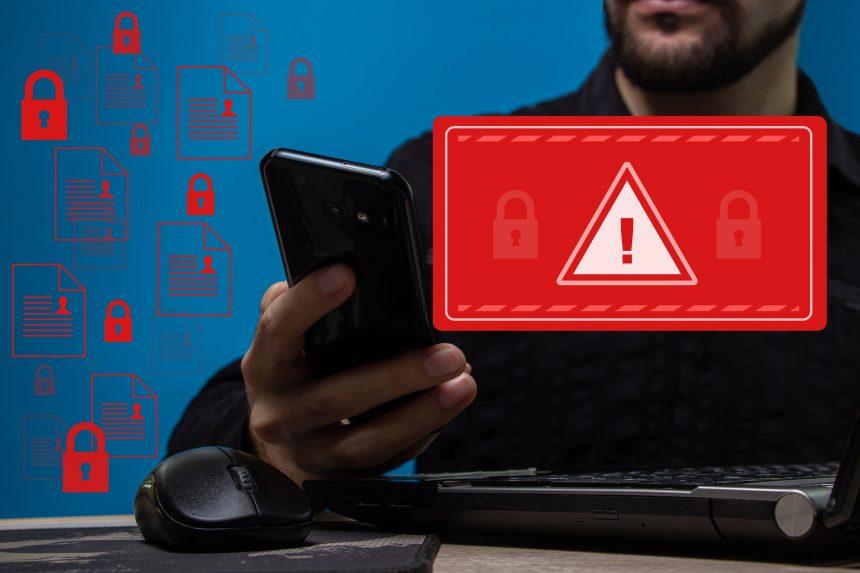Phishing scams have become increasingly sophisticated and prevalent. These scams often take the form of fraudulent emails or messages that appear to come from reputable sources, aiming to deceive individuals into revealing sensitive information, such as passwords, financial details, or other personal data. The primary purpose of these scams is financial gain for the attackers, who exploit the trust that users have in legitimate organizations. Typically, they infiltrate systems through deceptive emails that prompt users to click on malicious links or download harmful attachments. Once a user’s system is compromised, it can lead to data theft, financial loss, and a range of security threats that not only affect the individual but can also jeopardize the broader network they are connected to.
Overview of the Trust Wallet Phishing Scam
One particular phishing scam making the rounds involves a fake security alert from Trust Wallet, a popular cryptocurrency wallet. The email is designed to create a sense of urgency, suggesting that the recipient’s account has been compromised. Attackers often use email addresses that mimic legitimate organizations, making it difficult for users to discern the authenticity of the communication. For instance, emails sent from variations of the official Trust Wallet address can easily trick unsuspecting users.
Scam Details
The fraudulent email claims to come from Trust Wallet’s support team and usually includes the following elements:
- Sender’s Email Address: Scammers might use a slightly altered email address that resembles Trust Wallet’s official communication, such as
support@trustwallet.com, to create a facade of legitimacy. - Content of the Email: The email typically states that there has been suspicious activity detected in the user’s account. It may include vague instructions urging the user to verify their account or take immediate action to secure it.
- Instructions Provided: The email often instructs users to click on a link that leads to a phishing website, designed to look like the official Trust Wallet site. This link could ask for personal information, including passwords, recovery phrases, and other sensitive data.
The scam’s goal is to capture this information to gain unauthorized access to the user’s Trust Wallet account, ultimately leading to financial theft.
Text presented in the “Trust Wallet – New Security Alert” spam email letter:
Subject: Your Wallet Requires Urgent Verification Thursday, September 26, 2024 7:48 a.m.
Trust
NEW SECURITY ALERT
Dear ********,
Your 12 or 24-word private wallet phrase has recently been updated as part of our routine security checks and upgrades.
You are currently using your old private wallet phrase.
To send or receive cryptocurrency, you must re-validate your wallet.
Please click the *Re-validate My Wallet* link below and enter your old 12 or 24-word private wallet phrase on the next page.
If you encounter any issues with the link, you can alternatively reply to this email with your old 12 or 24-word private wallet phrase, and we will re-validate your wallet.
Note: Failure to do this within twenty-four (24) hours may result in the potential loss of all your crypto assets.
Re-Validate My Wallet
Customers ID: 01-83B7291O3AU
Email Date: (9/26/2024 7:48:52 a.m.)
Best Regards,
Trust Wallet Inc.
Common Encounters with This Scam
Victims of this phishing scam may have encountered it through various channels, such as:
- Unsolicited Emails: Users may receive unsolicited emails claiming to be from Trust Wallet.
- Social Media Links: Scammers may also promote these phishing emails via social media, directing users to suspicious websites.
- Compromised Websites: Visiting compromised websites that host phishing links can also expose users to these scams.
Similar threats users should be aware of include fake security alerts from other cryptocurrency wallets, phishing attempts via SMS (smishing), and fraudulent communications from various online services that prompt users to click links or download attachments.
Removal Guide for Associated Malware
If you believe you have fallen victim to this phishing scam, it is crucial to take immediate action to remove any associated malware from your system. Follow these detailed steps to ensure your device is secure:
Step 1: Disconnect from the Internet
- Disconnect your device from Wi-Fi or remove any Ethernet cable to prevent any potential data leaks while you conduct your cleanup.
Step 2: Identify the Malware
- Open Task Manager by pressing
Ctrl + Shift + Escor right-clicking the taskbar and selecting Task Manager. - Look for any unfamiliar programs running. Right-click and select End Task for any suspicious applications.
Step 3: Uninstall Suspicious Programs
- Go to Settings (Windows) or Applications (Mac).
- Navigate to Apps or Programs and look for any recent installations or unfamiliar names.
- Select the suspicious program and click Uninstall.
Step 4: Clear Your Browser Data
- Open your browser (Chrome, Firefox, etc.).
- Go to Settings > Privacy and Security.
- Select Clear Browsing Data and choose to clear cookies and cached images/files for all time.
Step 5: Scan for Malware
- Download SpyHunter.
- Install the program and open it.
- Follow the on-screen instructions to perform a full system scan.
- Allow SpyHunter to quarantine or remove any detected threats.
Step 6: Change Your Passwords
- Change passwords for all online accounts, especially for those associated with your Trust Wallet.
- Enable two-factor authentication (2FA) for additional security on sensitive accounts.
Preventing Future Scams
To avoid falling victim to similar scams in the future, consider implementing these preventive measures:
- Be Skeptical of Urgent Requests: Always be cautious of emails claiming urgent action is required, especially those asking for personal information.
- Verify the Sender: Check the sender’s email address carefully and look for discrepancies. If in doubt, contact the company directly using official contact methods.
- Use Security Software: Maintain updated anti-malware software like SpyHunter to protect your system from threats.
- Educate Yourself: Familiarize yourself with common phishing tactics and scams to recognize them in the future.
By taking these steps, you can significantly reduce your risk of becoming a victim of phishing scams.
Conclusion
Phishing scams, such as the Trust Wallet security alert email, can have serious consequences for unsuspecting victims. Being aware of these threats, understanding how they operate, and knowing how to respond can help protect your personal and financial information. Always prioritize your online safety and consider using tools like SpyHunter to keep your system secure.





